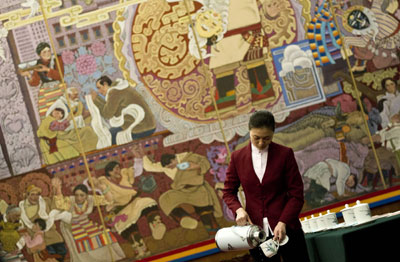China media analysts are looking to two significant events to shape coverage this month: The anniversary of a failed uprising in Tibet, and the annual meetings of China’s top political bodies, the National People’s Congress and the Chinese People’s Political Consultative Conference in Beijing. Journalists at work in both areas attracted coverage of their own today–but from vastly different angles.
California-based website China Digital Times describes foreign journalists defying restrictions to enter a Tibetan town in far-western Sichuan under information lockdown. CPJ has been reporting on increased censorship this year in ethnic minority regions, and renewed pressure on local bloggers. Foreign news outlets, meanwhile, are simply barred from the sensitive areas.
A few international news outlets have overcome these barriers. The Associated Press published this report on March 1:
An Associated Press reporter managed to get through several checkpoints along the road leading to Aba, for a rare glimpse of a town that has been under lockdown for more than three years, as well as an apparent uptick in security this week.
“I’m in this strange position because there are security personnel everywhere,” the U.K. Guardian‘s Jonathan Watts said to camera in February. “If I just raise my head I’ll be spotted…and I expect I would soon be picked up and taken away.” That expectation was not unfounded. Sky News’ Holly Williams described what happened after her team entered the forbidden region:
After leaving Aba the Sky News crew was detained by police who forcibly searched bags and deleted files from an audio recording device. They temporarily confiscated a computer and camera, threatened to revoke Chinese visas and then followed the car for 300 kilometers (187 miles).
Far from minimizing coverage, heavy-handed security measures are turning censorship in this restricted region into an even bigger story.
So what of the two political meetings? Some discussion of political reform has taken place in the domestic media, as the Hong Kong University-based China Media Project reports. But a number of local news outlets look for less controversial topics during the politically sensitive period around the sessions. As The Atlantic magazine’s James Fallows points out, domestic state newspaper The People’s Daily has also chosen to watch the media at work under highly pressurized conditions. This time, however, it’s with a slideshow under the heading, “Beautiful Female Journalists at the Two Sessions.”
